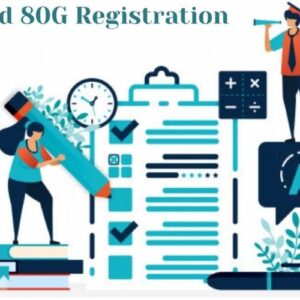Increasing stakeholder scrutiny and an undeniable imperative for corporate responsibility, Environmental, Social, and Governance (ESG) performance has moved from the periphery to the very core of business strategy. Companies are no longer merely judged on their financial returns but also on their impact on the planet, their treatment of people, and the integrity of their leadership. This paradigm shift necessitates robust, transparent, and auditable ESG reporting, a complex undertaking that often spans multiple departments, diverse data sources, and evolving regulatory frameworks. The traditional, siloed approach to data collection and report generation is proving woefully inadequate, paving the way for a revolutionary wave of collaborative ESG Reporting tools software.
The sheer breadth of ESG data is a significant hurdle. Environmental metrics encompass everything from greenhouse gas emissions and water consumption to waste generation and biodiversity impact. Social aspects delve into employee diversity, labor practices, human rights in the supply chain, community engagement, and product safety. Governance covers board structure, executive compensation, ethics, and anti-corruption measures. Each of these categories generates vast amounts of data, often residing in disparate systems across an organization – from ERP platforms and HR databases to operational sensors and supplier portals. Compiling this information manually, typically through endless spreadsheets and email chains, is not only time-consuming and inefficient but also highly prone to errors, inconsistencies, and a lack of version control. This fragmentation severely undermines the accuracy and credibility of the final ESG report, exposing companies to reputational damage and regulatory penalties.
This is precisely where collaborative ESG Reporting tools software emerges as an indispensable solution. These platforms are designed to break down internal silos, fostering a unified approach to ESG data management and reporting. At their core, these tools provide a centralized repository for all ESG-related information, drawing data from various internal systems and even external sources through automated integrations. This single source of truth ensures data consistency and reduces the risk of discrepancies that plague manual processes. Imagine a scenario where the facilities team updates energy consumption data, the HR department inputs diversity metrics, and the supply chain team uploads supplier sustainability audits – all within the same platform, accessible to authorized personnel across the organization. This real-time visibility is crucial for proactive management and accurate reporting.
Beyond data aggregation, collaborative ESG Reporting tools empower cross-functional teams to work seamlessly together throughout the entire reporting lifecycle. Features such as task management, workflow automation, and permission-based access streamline the often-arduous process of data collection, validation, and review. For instance, the software can automatically assign data collection tasks to specific departments, track their progress, and send automated reminders, significantly reducing bottlenecks. Built-in validation rules and anomaly detection algorithms flag potential errors or inconsistencies, prompting immediate review and correction, thereby enhancing data accuracy and reliability. This collaborative environment fosters a culture of shared responsibility for ESG performance, transforming it from a compliance burden into a strategic imperative.
Furthermore, these advanced ESG Reporting tools come equipped with powerful analytical capabilities and customizable dashboards. This allows stakeholders, from sustainability managers and finance executives to board members, to gain deep insights into the company’s ESG performance in real-time. Interactive visualizations can highlight trends, identify areas for improvement, and benchmark performance against industry peers or internal targets. This data-driven approach facilitates informed decision-making, enabling companies to identify and mitigate ESG-related risks, capitalize on sustainability opportunities, and develop more effective ESG strategies. The ability to model different scenarios and assess their impact on key ESG metrics is invaluable for strategic planning and resource allocation.
The evolving regulatory landscape also underscores the criticality of collaborative ESG Reporting tools. With new disclosure requirements emerging globally, such as the EU’s Corporate Sustainability Reporting Directive (CSRD) and the International Sustainability Standards Board (ISSB) standards, companies face an increasingly complex reporting burden. These tools are designed to adapt to these shifting regulations, often incorporating pre-built templates and frameworks aligned with major reporting standards like GRI, SASB, and TCFD. This significantly simplifies the compliance process, ensuring that companies meet their disclosure obligations accurately and efficiently, thereby mitigating regulatory risks and enhancing investor confidence.
The benefits extend beyond compliance. By fostering collaboration and transparency, these ESG Reporting tools cultivate greater stakeholder trust. Investors are increasingly prioritizing companies with strong ESG performance and transparent reporting, viewing it as an indicator of long-term resilience and value creation. Customers are becoming more discerning, opting for brands that align with their values. Employees, too, are drawn to organizations that demonstrate a genuine commitment to sustainability and social responsibility. By providing a clear, consistent, and credible narrative of their ESG journey, companies can attract and retain talent, enhance their brand reputation, and ultimately gain a competitive advantage in the marketplace.
In conclusion, the transition to a sustainable economy demands a fundamental rethinking of how organizations manage and communicate their environmental, social, and governance impacts. Collaborative ESG Reporting tools software is not merely an optional upgrade; it is a strategic imperative for any forward-thinking enterprise. By centralizing data, streamlining workflows, empowering cross-functional teams, and providing robust analytics, these tools enhance data accuracy, improve efficiency, facilitate compliance, and foster greater transparency. As the world continues to prioritize sustainability, the ability to synergize efforts through advanced ESG Reporting tools will be a defining characteristic of resilient, responsible, and ultimately, successful businesses.



